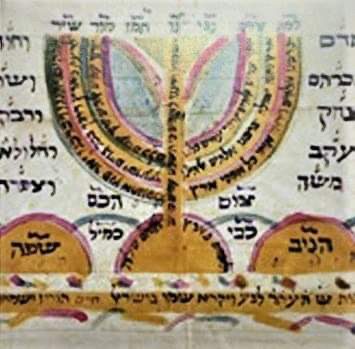
The Jews that have lived in Greece since Hellenistic times (3rd century B.C.), were called Romaniote Jews in Byzantine times and formed the vast majority of the Jewish population in Greece until the 15th century. They used Greek as their everyday language of communication from the moment they settled. They were inspired by the local culture and customs, and were versatile enough to blend them with their own to create the unique Greek-Jewish tradition. They retained their religious identity, as can be seen in the synagogues they built and also in the survival of Hebrew their liturgical language. All Romaniote Jews maintained a distinct form of religious observance; that is laid out in different variations in the Mahzor Romania, the common Romaniote prayer book, the Mahzor Kastoria, the Mahzor Candia and the Mahzor Corfu. Relations with local people were, on the whole, good, and there were no cases of anti-Semitism apart from a few isolated incidents of religious fervour.
With the arrival of the Sephardim in the late 15th century, things changed. Populations in most of the Romaniote Jewish communities, those of Epirus, the Peloponnese and Crete excluded, had dwindled because of migration and were therefore absorbed into the culture of the Sephardim, whose traditions held sway. The most notable differences between Romaniote and Sephardim were in the language they used, their dress, food and form of religious observance. Even so, the Romaniote Jews were persistently more numerous until World War II in towns and cities like Arta, Preveza, Patras, Trikala, Volos, Chalkis and Chania.
The city of Ioannina was definitely the centre of the Romaniote Jewish population. It is generally assumed that an inscription was extant prior to 1800, which would have alluded to the existence of a synagogue since the 9th century C.E., almost coinciding with the founding of a city of the same name on the same site as present day Ioannina. Jews are known to have lived in Nikopolis, Aktio and Arta in the surrounding coastal area since late antiquity, and there is a clear historical reference to there having been a Jewish population in Ioannina under Andronicus II Palaeologus in the 14th century. The Byzantine era was a difficult time for the Jewish population of Ioannina because of frequent attacks from abroad, but also because of domestic imperial, administrative realignment and reclassification, which frequently heralded a change in attitudes towards Jews.
Jews were treated reasonably under Ottoman rule. They were allowed freedom of religious observance, given special privileges in trade and work, and they were allowed autonomy within their own communities. The Sephardim Jews settled in Ioannina in the 16th century, were assimilated into the Romaniote Population and were soon joined by others of the same faith from Southern Italy and Sicily. The Jewish population lived in their own quarter inside the city walls / fortification. This was by no means a ghetto; it was merely the Jewish quarter of the Ottoman city where, as in all Ottoman cities, every minority religious group had its own neighbourhoods. After 1611, the Jewish quarter within in the city walls, a district known as the “Castle” (Kastro) where the Old Synagogue still stands today, grew significantly.
Source of texts and photos: The Jewish Museum of Greece, https://www.jewishmuseum.gr
